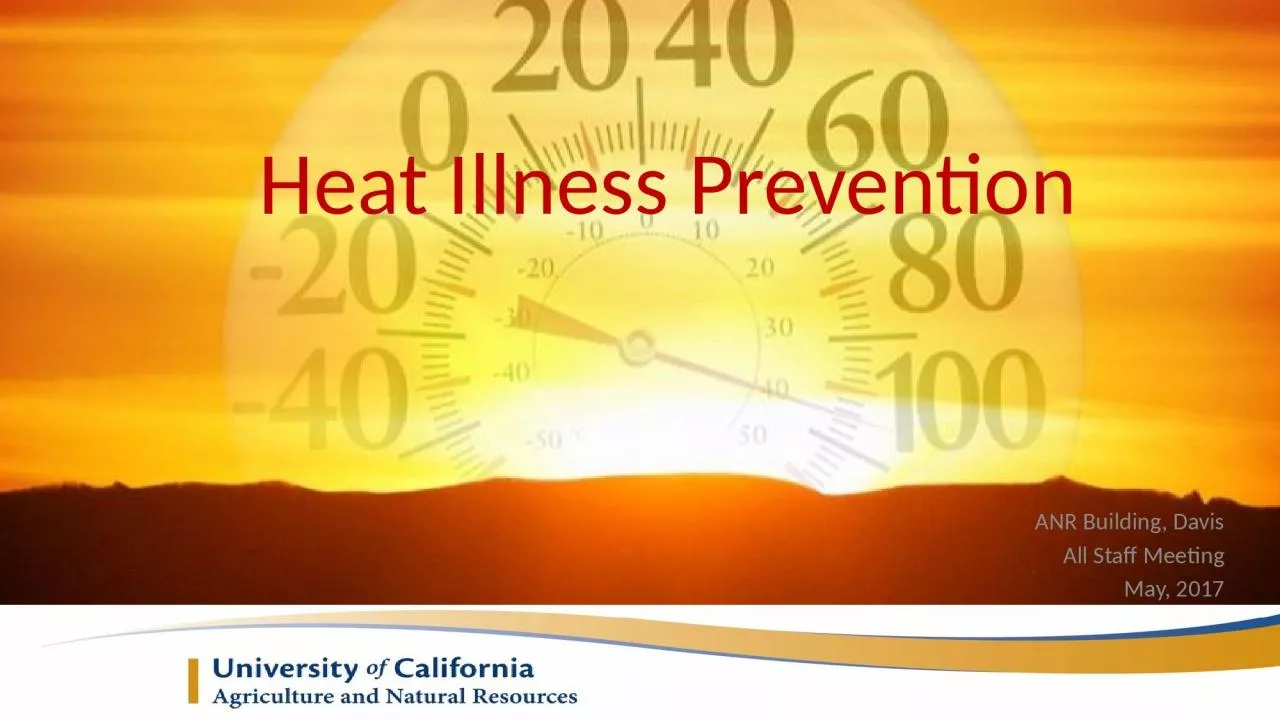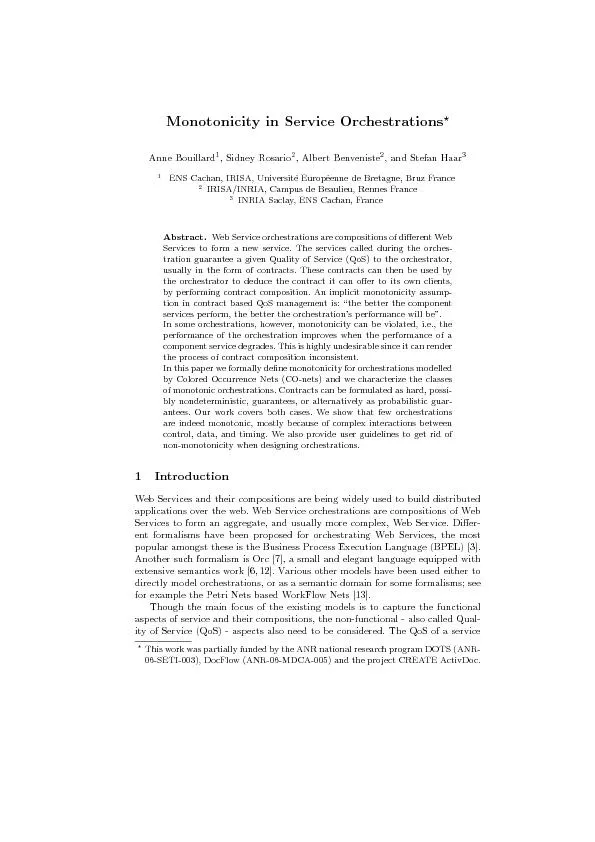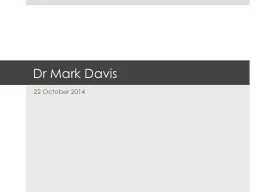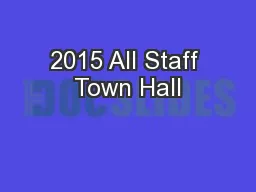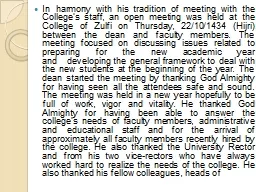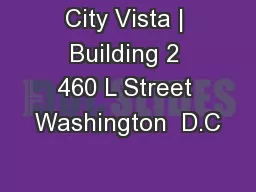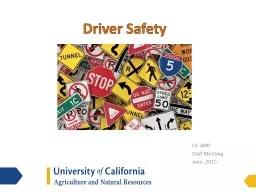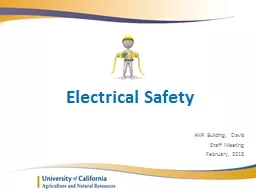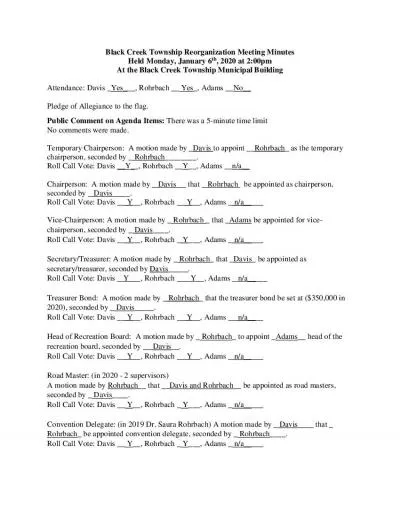PPT-ANR Building , Davis All Staff Meeting
Author : joanne | Published Date : 2022-06-28
May 2017 Heat Illness Prevention The Bodys Response to Heat Homeostasis maintaining an internal core temperature 977 995 Thermoregulation the balance between heat
Presentation Embed Code
Download Presentation
Download Presentation The PPT/PDF document "ANR Building , Davis All Staff Meeting" is the property of its rightful owner. Permission is granted to download and print the materials on this website for personal, non-commercial use only, and to display it on your personal computer provided you do not modify the materials and that you retain all copyright notices contained in the materials. By downloading content from our website, you accept the terms of this agreement.
ANR Building , Davis All Staff Meeting: Transcript
Download Rules Of Document
"ANR Building , Davis All Staff Meeting"The content belongs to its owner. You may download and print it for personal use, without modification, and keep all copyright notices. By downloading, you agree to these terms.
Related Documents

